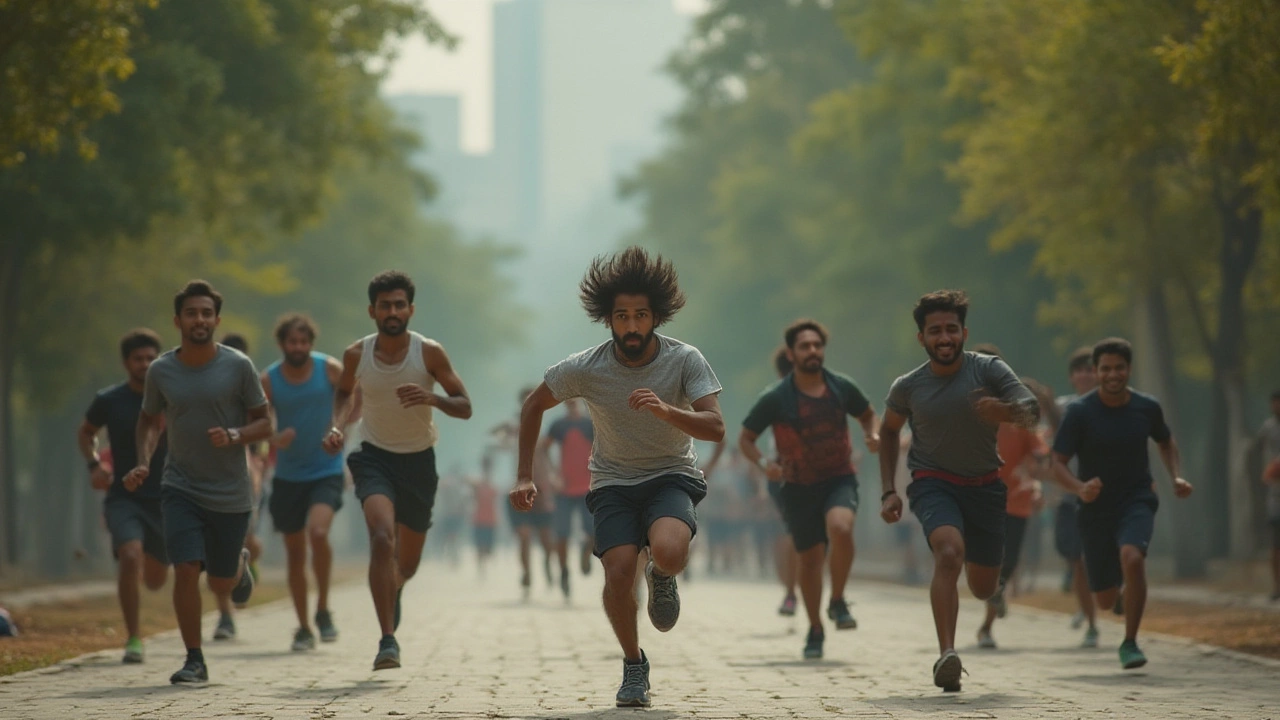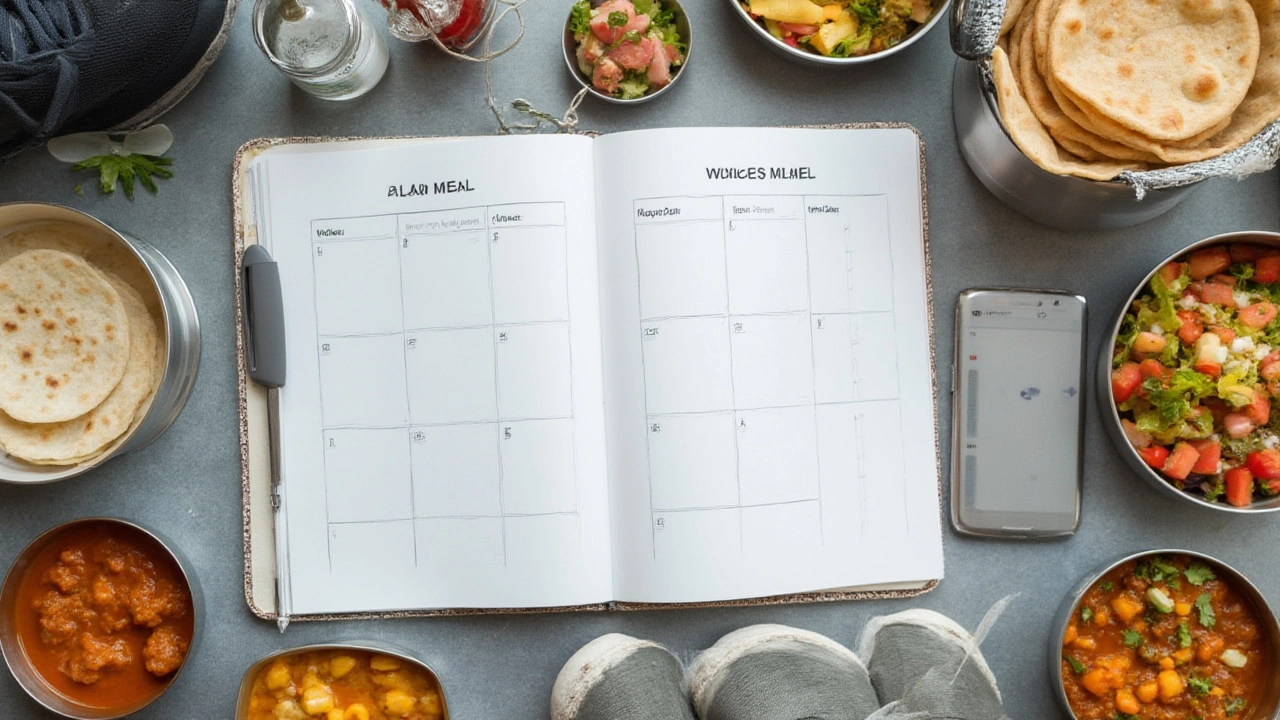
- Jul, 12 2025
- 0
That stubborn bit of belly fat? It’s not just a vanity problem, it’s one of those things that haunts you every time you try to zip up your old jeans. If someone told you there’s a magic trick for melting it away in just two weeks, I’d say run—probably literally. But the truth is, there are real, grounded strategies that can get your waistline moving in the right direction. Seriously, I’ve eaten late-night pizza with my kids more times than I care to admit, so when my trousers start feeling tight, I know I’m not alone in wanting results—and quickly.
What Makes Belly Fat So Stubborn?
Everyone has some belly fat—yes, even folks who look thin everywhere else. Fat around the belly (also called visceral fat) sits beneath your abdominal muscles and wraps around your organs. It’s not just about looks. Having too much can mess with your hormones, your heart, and even how your body deals with insulin. Studies from the University of Sydney show that people with higher visceral fat are way more likely to face type 2 diabetes and heart disease—even if their Body Mass Index (BMI) is otherwise healthy. The biggest headache about belly fat is that, compared to thigh or arm fat, it tends to be more metabolically active. Translation: it’s both harmful and harder to lose.
Some folks are more prone to it because of genetics. In my family, I can already see my son, Vihaan, storing fat differently than my daughter, Anika. Age is another factor. As we get older, our metabolism gradually slows and hormones drop, making it easier for fat to pile onto the midsection. Plus, sitting all day at a desk job or in Sydney traffic just adds fuel to the fire. If you think you can spot-reduce belly fat by churning out hundreds of crunches, sorry—that’s just not how things work. Anyone promising lightning-fast, localized results is selling you a fantasy.
If you want a real shot at slimming your waist in two weeks, you’ll need to approach it from the inside out. What you eat, how you move, and even how you sleep all play into it. And while you might not drop ten kilos in two weeks, consistent, focused effort can absolutely make a difference you can see—and feel. Interested in what really works?
Diet Hacks That Actually Flatten Your Stomach
You’ve probably heard the saying, “Abs are made in the kitchen.” Annoying, right? But it’s true. You’ll never out-train a bad diet, especially when it comes to belly fat. If you want to see results in two weeks, dial in what you eat starting today. Here’s the deal: cutting calories is important, but cutting too much is a recipe for cravings and crankiness (trust me, I’ve tried). Aim for a moderate calorie deficit—about 500 fewer calories a day—which is enough to spur fat loss without sending you into a hunger spiral. Use a free tracker app to keep an eye on what you eat for a week and you’ll probably be shocked by the hidden calories in "just a few bites" of your kids’ leftovers.
Protein is your secret weapon. A high-protein diet keeps you full, helps you keep muscle, and boosts your metabolism. Studies in the British Journal of Nutrition found that eating 25–30% of your calories from protein leads to more belly fat loss than standard diets. Beans, lean chicken, eggs, and Greek yoghurt are your friends here. Ditch the refined stuff—white bread, sugary cereals, fizzy drinks—because these cause blood sugar spikes, and your body responds by storing more fat around the belly. Instead, fill your plate with fibre-rich foods: veggies, berries, oats, lentils. Fibre slows digestion and helps control appetite so you’re less likely to go hunting in the pantry late at night.
And about fats: don't run from them. Healthy fats, like those in avocados, nuts, seeds, and olive oil, actually help keep your appetite steady. Just measure them out—those calories add up fast. While you’re at it, watch your salt. Australian Dietary Guidelines show most of us eat too much, leading to bloating and water retention, which makes your belly look bigger. Cut down on packaged foods, and try seasoning with lemon or herbs instead.
Don’t forget hydration. Sometimes, a tight belly is just regular old bloat because you’re not drinking enough water. Aim for at least two litres a day, and back off the fizzy drinks. They are a bloating bomb, and those diet sodas only mess up your gut bacteria.
| Food Group | Eat More | Eat Less | Why? |
|---|---|---|---|
| Protein | Chicken, eggs, tofu, Greek yogurt | Bacon, fried meats | Supports fullness, muscle, metabolism |
| Carbohydrates | Oats, legumes, vegetables | White bread, pastries | Fibre helps reduce belly fat, avoids sugar spikes |
| Fats | Avocado, olive oil, almonds | Butter, margarine | Healthy fats, steady appetite |
| Beverages | Water, herbal tea | Soft drinks, energy drinks | Reduces bloating, hydrates, avoids sugar |

Exercise Routines That Target Belly Fat (Sort Of)
If only we could pick where our body burns fat—but life isn’t that kind. While crunches and planks build core strength, you also need a blend of cardio and strength training to burn body fat, including the stuff clinging to your stomach. If you want to torch the most fat in the least time, High Intensity Interval Training (HIIT) is your best mate. Instead of slogging through an hour-long jog, HIIT alternates short bursts of all-out effort (think sprinting or fast cycling) with brief rest periods. Sydney’s Bondi Beach runners are onto something here—a 2017 study in the Journal of Sports Medicine shows HIIT burns belly fat faster than traditional cardio. Try intervals like 30 seconds sprint, 60 seconds rest, repeat for 15–20 minutes.
But you can’t skip strength training. Muscle is "calorie-hungry"—it burns energy even at rest—so adding resistance moves, like squats, lunges, and pushups, will boost your metabolism and help keep fat from creeping back. Women sometimes worry about "bulking up." Honestly, it’s near impossible without heavy lifting and loads of extra calories, so don’t stress.
If you want to really feel it in the belly, add core-focused moves. Think bicycle crunches, planks, toe-touches, and Russian twists. These won’t shrink your belly on their own, but they’ll tighten and define the muscles under the fat. Aim for at least 150 minutes of moderate activity each week, as recommended by Australian health guidelines. Little tricks help too: take the stairs, park far from your destination, play chasey with your kids. Every bit of movement adds up, especially if you’re pressed for gym time like most parents I know.
- HIIT cardio (3x a week): 20-minute sessions
- Full-body strength training (2–3x a week)
- Core exercises (4–5x a week): 10–15 minutes
- Daily movement: walk, cycle, take the stairs
Track your progress, not just by the scale, but by how your clothes fit or how many crunches you can actually do without collapsing. Losing belly fat is a sign your health is improving, not just your waistline shrinking.
Lifestyle Shifts That Actually Make a Difference
Belly fat isn’t just about what you eat or how you exercise. Stress and sleep play a bigger role than most people realise. Ever notice how after a rough week, that muffin top seems even puffier? Stress causes your body to churn out more of the hormone cortisol, which tells you to do dumb things like snack on biscuits at midnight. Chronic stress is linked with bigger waists and more health risks. A 2022 study in The Lancet followed over 700 Aussie adults and found folks with high chronic stress were almost twice as likely to accumulate belly fat compared to their chill friends.
If work, family, or just life keeps your stress high, try to find some “off” time, even just 15 minutes a day. Meditation apps, deep breathing, or even a walk while listening to your favorite playlist can lower cortisol. I know meditating sounds a bit woo-woo to some people, but science backs it up: just five minutes can bring down stress hormones.
Sleep is another fat-loss superpower. If you’re regularly getting less than 7 hours a night, your risk of putting on belly fat skyrockets. Sleep loss throws off your hunger hormones, making it easier to overeat, especially those sugary, starchy comfort foods. Create a wind-down routine—turn off screens an hour before bed, read, sip herbal tea, and keep the bedroom cool. If you’re a parent (yep, I feel your pain), do your best and nap when you can to catch up.
- Avoiding screen time 1 hour before bed
- Setting a regular bedtime (even on weekends)
- Keeping your bedroom dark and cool
- Using mindfulness or meditation apps
- Saying no to late-night snacks
Then there’s alcohol. As much as I love a weekend beer, booze is a belly fat magnet. The body treats alcohol as a toxin, so it slows fat burning until the alcohol is out of your system—plus, most drinks are packed with calories and lower your willpower around food. If you’re serious about losing belly fat fast, go booze-free for the next two weeks and see how much better you feel and look.

What to Expect After Two Weeks—and How to Keep It Going
If you stick to a focused plan, what can you actually expect? Most people won’t lose all their belly fat in two weeks, but you can see a noticeable difference. Research from Macquarie University showed that in two weeks, people who combined diet changes, regular exercise, and better sleep lost on average 1–2 kg, mostly from their midsection. Clothes get looser, bloating drops, and energy levels go up.
Measure success beyond the scale. Take a photo at the start and after two weeks in the same clothes—side-by-side, you might be surprised. Keep a log of your workouts and meals. Celebrate small wins: staying away from the bakery at work, squeezing in a workout even when you didn’t feel like it, or just drinking your water goal. Progress isn’t always linear, especially as your body adjusts to changes.
The hardest part is not slipping back once you see the results. If you go back to old habits, the fat will creep back too. Make these changes things you can live with—meal-prepping healthy options, planning workouts with friends (or your kids—that counts!), and building a life around movement and balance. Belly fat can be stubborn, sure, but it isn’t invincible—real change is totally possible, and it starts way before you reach the end of those two weeks. Stick it out and that confidence boost, plus all the new energy, will make you wonder why you ever waited in the first place.
Nikhil Verma
I'm a dedicated physician with a passion for exploring the intricacies of medicine, focusing on the unique healthcare challenges in India. I spend much of my spare time writing articles aimed at improving public understanding of health issues. Balancing my clinical practice and writing allows me to reach a wider audience, sharing insights and fostering a deeper appreciation for medical advancements. I derive immense satisfaction from both treating patients and engaging with readers through my writing.